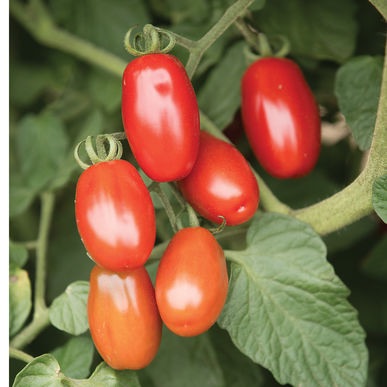In July, gardens across the nation really start to heat up. Southern California,gardens had a long, cool spring with lots of powdery mildew and vegetables stuck in waiting-to-ripen mode. Now, its happening fast and furiuos. Are you ready? Here are some July Garden Tasks.
- Schedule gardening time to early or late in the day to avoid the midday heat and sun. Wear a hat, long sleeves, and sunscreen.

- Hands take a beating from the sun, so consider fingerless sun-protection gloves, hand covers, or sleeves marketed to surfers and other athletes.
- To prune or not to prune tomatoes? Pro tomato breeder Doug Heath of Bejo Seeds, says the only reasons to prune tomato plants are 1) to improve air circulation if tomato start to develop mold or mildew, or 2) to reduce the bulk and size of indeterminate tomato plants. Indeterminate tomatoes – cherry tomatoes in particular – can grow into huge, dense jungles. If space is limited or plants become hard to manage, go ahead and prune, Heath says. Their fruits might grow larger too.

- Pruning shears can transmit viruses from one plant to the next, so use your fingers to pinch out or break off tomato branches if you prune. And wash your hands between plants.
- Watch for tomato hornworms. They are beautiful but they can strip a tomato plant of leaves almost overnight. Pick them off and drop into a container of water.

- Soft brown spots at the bottom end of tomatoes, peppers, or squash are evidence of blossom end rot which is from uneven watering. The cure is to make sure the soil stays damp at all times. Use your fingers to feel how wet the soil is. Water before soil dries out, and mulch vegetable beds with straw (NOT HAY) to help slow evaporation from the soil surface.
- Plant seedlings of tomato, pepper, eggplant, melons, and other summer edibles through the end of the July for late summer/early fall harvest.
- If you haven’t planted your Halloween Jack ‘O lanterns or Thanksgiving pie pumpkins, plant them now

- Harvest their fruits as they ripen. Wash, dry, and freeze extras in a zip top bag.
- Avoid attracting more pests to your garden by gathering and composting fallen fruits before they rot.
- Fertilize and water citrus, avocado, mango, banana, and other tropical fruiting plants.
- Keep avocado trees well watered, all the way out past the drip line. Let low branches stay on the tree to protect the trunk from sunburn. Allow the leaves to accumulate under the trees as natural mulch.
- Time to solarize! Mow your lawn or weeds as close to the ground as possible.Saturate the soil with water and then cover with clear (NOT BLACK) plastic, spread low and tight against the ground. The plastic will trap the sun’s rays to superheat the soil, killing grass, weeds, weed seeds, etc. In six to eight weeks, they’ll be gone. To see how it is done, watch “Bye Bye Grass,” one of the episodes of my TV show, A Growing Passion.

- Don’t be fooled into using weed cloth, weed fabric, landscape cloth, etc. under mulch or gravel or anything else.The mulch/gravel/etc. slides off eventually. In the meantime, weed cloth does not reduce weeds. Instead, it harms the soil, kills the important, beneficial microbes that live in soil. Eventually, weed cloth breaks down and makes a mess you’ll need to remove.

- Leave some bare soil in the garden for ground nesting native bees. They don’t need much space, just a couple of square feet, here and there.
- If your garden plants accumulate a fine film of dust, or a mask of spider webs, hose them down with a sharp spray of water.
- Plant South African bulbs like Watsonia, Homeria, Babiana, Sparaxis, and others. These waterwise bulbs are dormant through the long, hot, dry summer. In early fall, they’ll poke new leaves out of the ground, then bloom next spring.






